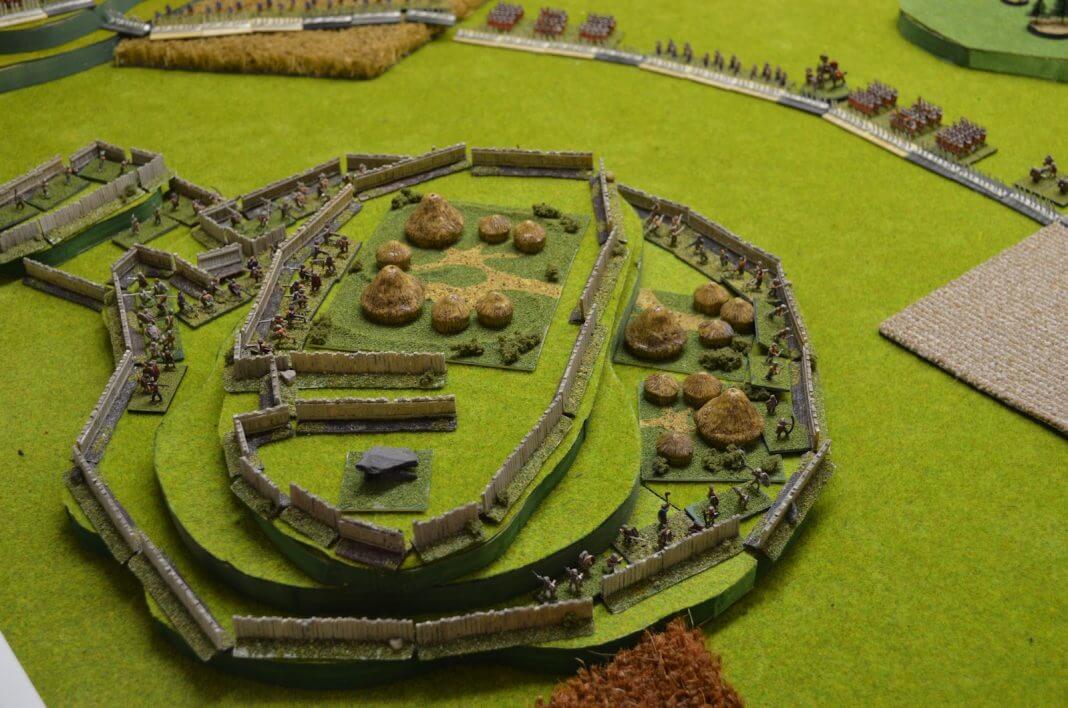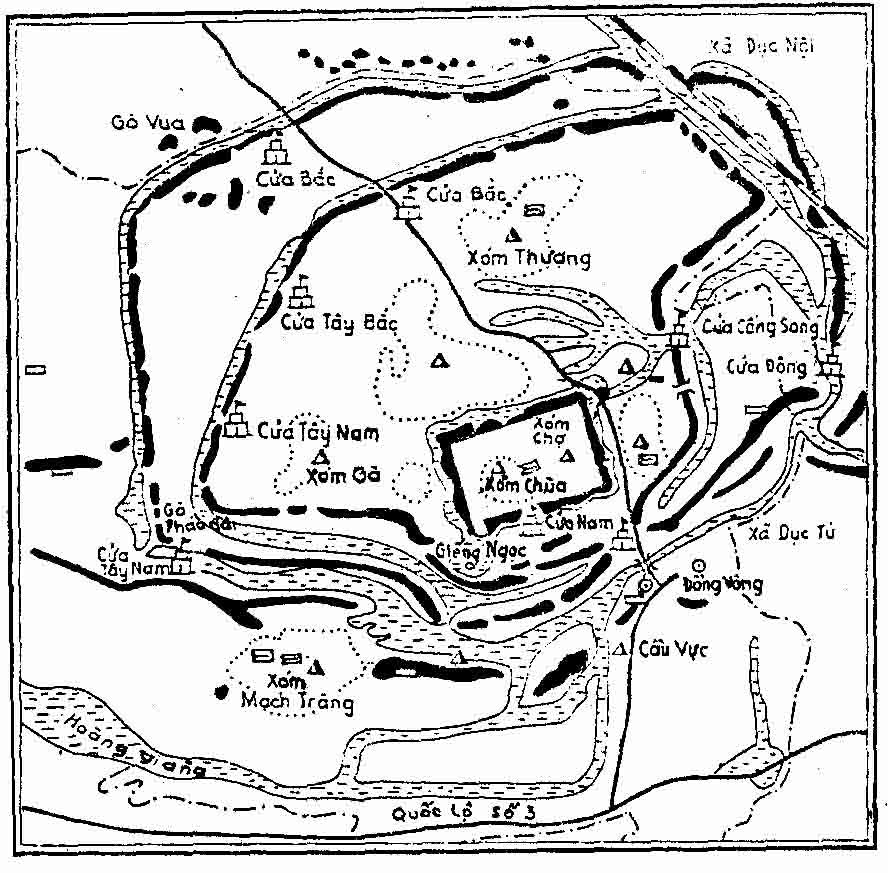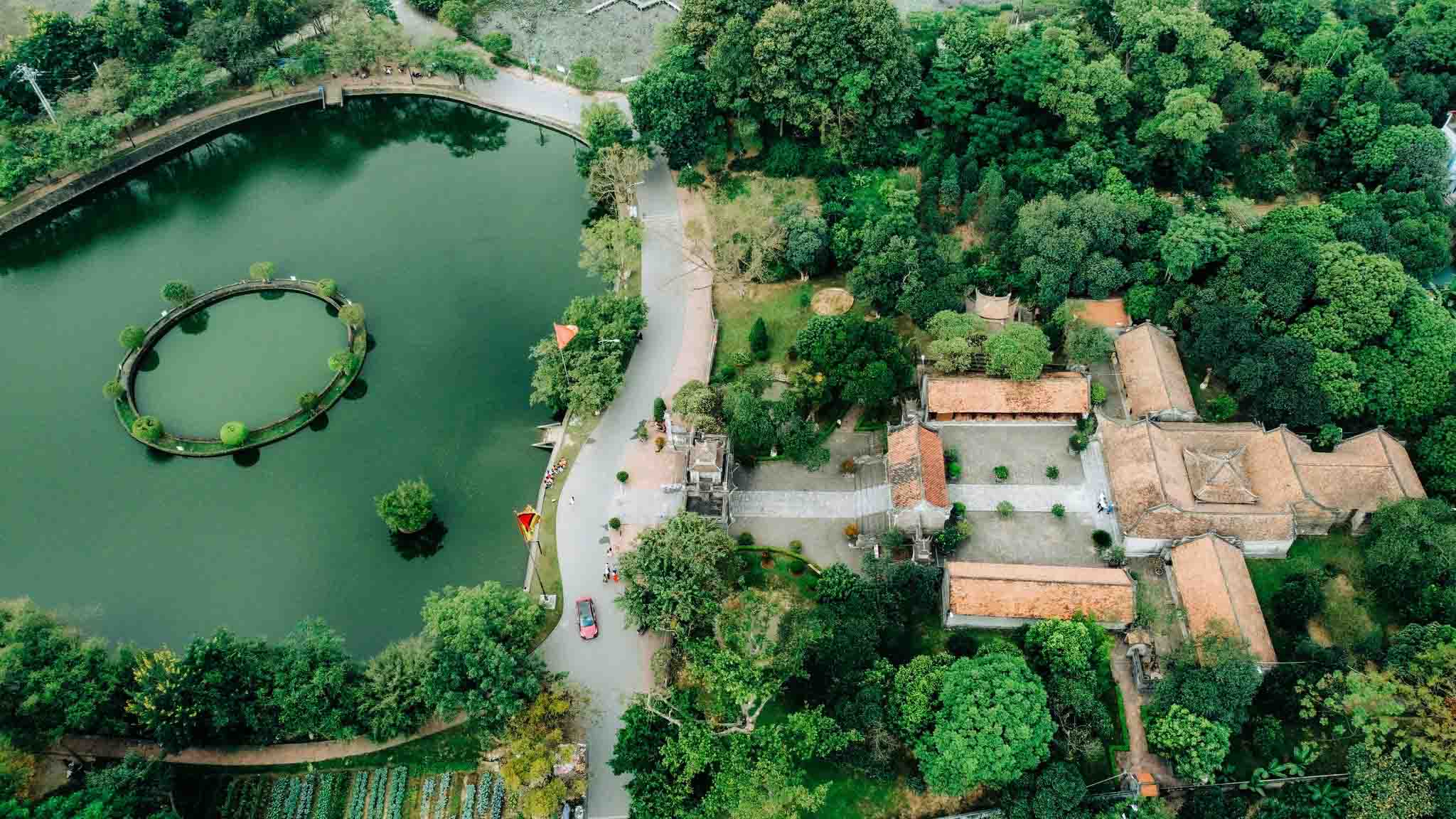CO LOA CITADEL, CAPITAL OF ANCIENT AU LAC STATE
Loa Citadel is not only a unique architectural work but also carries extremely precious cultural and historical values of the Vietnamese people. Located in Dong Anh district, Hanoi, Loa ancient citadel was built in the 3rd century BC and has gone through many ups and downs in history. This article will explore more deeply Loa's ancient citadel, from its history, and architecture, to its role in culture and people's lives.

History of the formation of Loa citadel
Historical origins
Loa Citadel was built in the early period of Vietnamese civilization when the country was still in the process of formation and development. According to legend, the citadel was built during the reign of King An Duong Vuong, the founder of Au Lac country.
King An Duong Vuong chose this location to build the citadel to protect the country from invasion by outside forces. With a favorable geographical location, Loa's ancient citadel became an important political and military center of Au Lac.

Historical events
Throughout its history, Loa's ancient citadel has witnessed many wars and major events. The citadel was once the site of fierce battles between the Au Lac army and the Northern invaders. In particular, the story of the war against Trieu Da, a famous figure in history, has created heroic pages for this ancient citadel.
In addition, Loa's ancient citadel is also home to many legends and myths related to King An Duong Vuong and My Chau, a tragic but meaningful story about love and loyalty.
Cultural heritage
Today, Loa's ancient citadel is not only a historical relic but also an important part of the nation's cultural heritage. Festival activities and customs around the ancient citadel are still maintained and developed, contributing to preserving the national cultural identity.
Learn about Loa Thanh's history through the ages
The history of Co Loa citadel is divided into different periods and each period will carry profound meanings:
Prehistoric period: About 20,000 to 11,000 years ago, Co Loa land had traces of living of primitive people of the Son Vi culture.
Au Lac - An Duong Vuong period: Co Loa was the earliest and largest ancient city built in Southeast Asia.
Northern domination period: Loa Thanh was an important district in the government system of the Northern Feudal dynasty.
Ngo Quyen period: Ngo Quyen proclaimed himself king in 938 and established the capital in Co Loa.
11th - 18th centuries: Loa Thanh began to form village units.
19th century - to present: Loa Thanh was the base in the resistance war against the French and the rear during the anti-American period. Up to now, Co Loa is still developing and preserving traditional culture.
Architecture of Loa ancient citadel
Overall design
Covering an area of nearly 46 hectares, including 3 citadels (Inner citadel, Central citadel, Outer citadel) closed, covered with soil, with a total length of 15,820km. The citadel was built based on the natural terrain - connecting mounds, heaps, and high strips of land along the river; Surrounding the citadel are moats connecting with the Yellow River. On the citadel's surface, there are mounds of earth protruding outward, called "ho ho"; The citadel has a place cut into a gate, and a temple to worship gods is built above. Some famous works at Co Loa citadel include Thuong Temple (the temple of An Duong Vuong), Co Loa Communal House (Ngu Trieu Di Quy), My Chau Am (Ba Chua Am or My Chau Temple), Co Loa Pagoda ( Bao Son pagoda), Mach Trang pagoda (Quang Linh pagoda), Mach Trang communal house,...
The city gates
The structure of Co Loa Citadel, Ngoai Citadel, and Central Citadel all have 5 gates open, including a common gate in the south, called Tran Nam Mon, or Southern Gate. Thus, the two outer and middle citadels have 9 gates. The inner citadel opened a door, which no longer exists. It is only known through the legend that the door opened in the south, right at the door of Co Loa communal house.
The role of Loa citadel in folk culture
Legends and myths
When mentioning Co Loa, people immediately think of the legend of An Duong Vuong being shown how to build the citadel by the god Kim Quy, of the magic crossbow bolt made from the toenails of a magic turtle and the tragic love affair of My Chau - Trong Thuy. Behind those spiritual stories, descendants can also discover the great archaeological values of Co Loa.
Festivals and customs
Co Loa Temple Festival aims to commemorate and honor the merits of King An Duong Vuong. At the festival, many rituals will take place such as offerings, offerings to the king, and a palanquin procession around Crescent Lake. When participating in the Co Loa temple festival, visitors will watch performances of Cheo, Tuong, and Quan Ho singing... or play folk games such as cockfighting, and smashing clay pots... Participating in the festival, visitors also can pray for luck, peace, and a year of good weather and wind.
In addition, the customs and practices around the citadel are also very diverse, from worship rituals to folk games, all of which demonstrate the unique cultural beauty of this land.
Traveling to Loa Citadel
Sightseeing ticket prices and opening hours of Co Loa Citadel
To visit Co Loa Citadel in Dong Anh Hanoi, visitors need to clearly understand opening times as well as ticket prices to visit the citadel:
Opening hours: 08:00 - 17:00 weekdays
Sightseeing ticket price: For adults, ticket price: 10,000 VND/trip; For students and the elderly, ticket price: 5,000 VND/trip; For children and public employees ticket price: Free.
Attractive destination
Loa Citadel is increasingly becoming an attractive destination for domestic and foreign tourists. With its wild and majestic beauty, Loa's ancient citadel attracts those who love to explore history and culture. Visitors can visit architectural works, learn about history, and enjoy specialty dishes of the East Anh region.
Sightseeing activities
When coming to Loa's ancient citadel, visitors can participate in many interesting activities such as taking photos, visiting historical relics, or participating in traditional festivals. In addition, visitors can also learn about the traditional crafts of local people, such as pottery making, weaving, or preparing specialty dishes.
The ideal time to visit
Visitors can come to Loa Thanh in any season of the year to visit and explore. However, to be able to participate in the Co Loa temple festival with many interesting activities, you should plan to come here in January. Or if you want to admire the beautiful natural scenery when the poinciana and magnolia flowers bloom, you can go to Loa Thanh in the summer. Each season will bring its feelings and experiences to visitors.

Conclude
Loa Citadel is not only a historical relic but also a symbol of Vietnamese national culture and tradition. With its historical values, unique architecture, and important role in cultural life, Loa ancient citadel deserves to be preserved and developed. Hopefully, through this article, readers will have a deeper insight into Loa's ancient citadel, one of the precious cultural heritages of the Vietnamese people.
other information
- ANCIENT CULTURE IN VIETNAMESE TERRITORY
- HOA LU ANCIENT CAPITAL, THE 1ST CAPITAL OF CENTRALIZED FEUDAL STATE OF VIETNAM
- THE LONGEST-REIGNING KING OF VIETNAM
- NGUYEN DYNASTY, THE LAST FEUDAL DYNASTY IN VIETNAM
- THE IMAGE OF BUFFALO IN VIETNAMESE TRADITIONAL CULTURE
- TAM DAO, AN IDEAL DESTINATION FOR WEEKEND
- FANSIPAN - THE PARADISE OF NORTH-WEST VIETNAM
- THE COCONUT, AN INDISPENSABLE FRIEND IN VIETNAM FOLK CULTURE
- LOTUS FLOWER, A SYMBOL OF TRADITIONAL VIETNAMESE FOLK CULTURE
- BA NA HILLS, A MAN-MADE MASTERPIECE THAT HARMONIZES WITH NATURE
